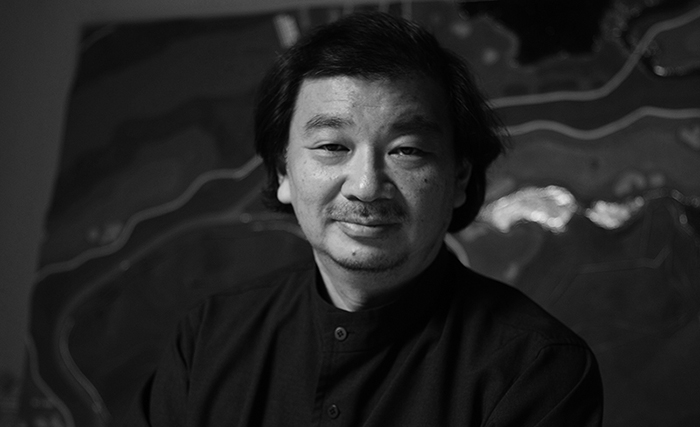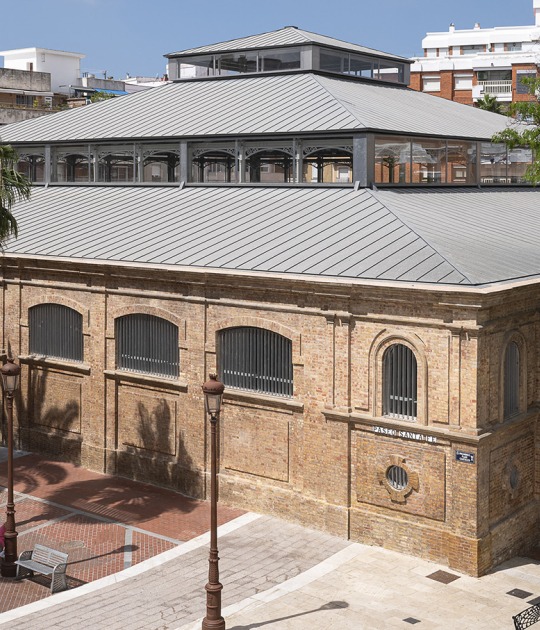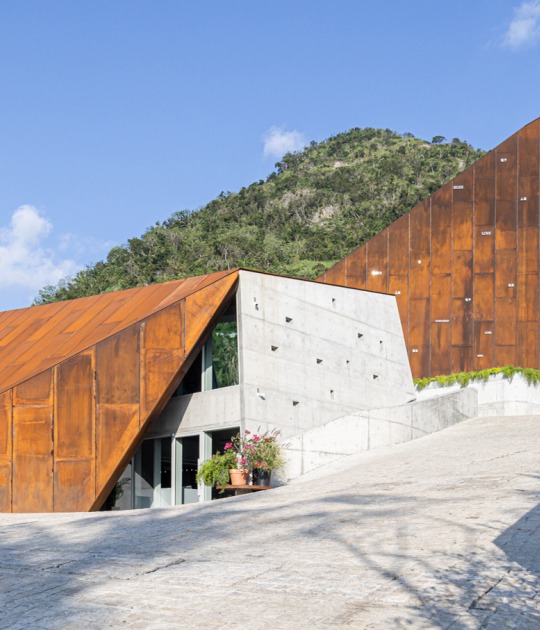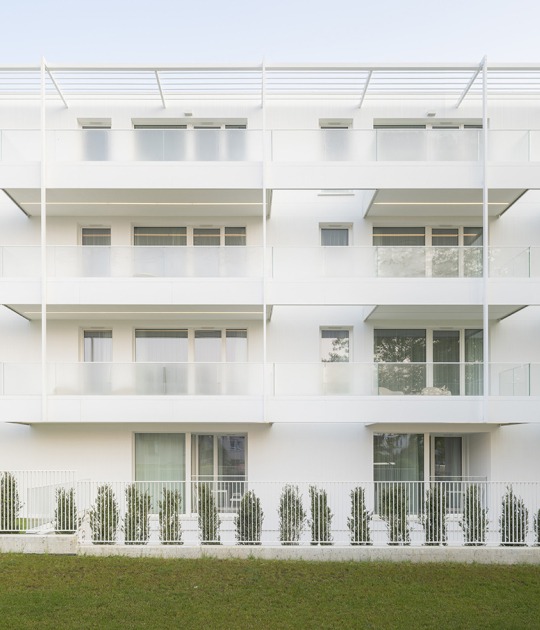Shigeru Ban was born in Tokyo on August 5, 1957. His father was a businessman at Toyota, and his mother is a women’s clothing “haute couture” designer. Ban’s father was very fond of classical music and made Ban learn the violin at a young age. His mother traveled to Europe every year for the fashion weeks in Paris and Milan, which roused Ban’s longing to travel overseas. When Ban was young, carpenters were often hired to renovate the family home, a wooden house. Ban was fascinated by the traditional work of the carpenters, and he liked to pick pieces of wood to build things. Ban decided he wanted to become a carpenter.
Ban excelled at arts and crafts in primary school and junior high school. The model of a house he designed for an assignment during his 9th-grade summer holiday was displayed in his school as the best. He then decided that he wanted to become an architect. In parallel with this dream was his love of rugby. He had played rugby since the age of ten, and while in junior high school, was selected as a member of the junior Tokyo regional team that competed against the Korean national team. Ban hoped to attend Waseda University in order to pursuit both rugby and architecture. After learning of a drawing examination to enter that university, he spent every Sunday, starting in 10th grade, learning how to draw at a painter’s atelier, and from the 11th grade, he went to a drawing school every day after his rugby training at school. Ban was selected as a regular member of his rugby team when he was in 11th grade and played on the national tournament; however, his team was defeated on the first round. He then decided to give up his plans to enter Waseda University, known for its strength in rugby, and go to Tokyo University of the Arts to focus on studying architecture. From the 12th grade, Ban joined the evening classes of a preparation school to enter the university. He learned structural modeling using paper, wood, and bamboo for the first time, and his exceptional ability quickly proved him to be peerless in this area. His teacher at the evening school was Tomoharu Makabe, a graduate from the architecture department of the Tokyo University of the Arts. One day, at Makabe’s house, Ban came across an article on John Hejduk, the “paper architect” and then-dean of Cooper Union’s School of Architecture in New York. Ban’s encounter with the models and plans of these unbuilt buildings was revolutionary for him, and he decided to go to the United States and study architecture at Cooper Union.
In 1977, Ban traveled to California to study English. At that time, he discovered that Cooper Union did not accept students from abroad and only accepted students who transferred from other schools within the United States. Ban searched for a school from which he could transfer and decided to attend the Southern California Institute of Architecture (SCI-Arc), which had just been founded and used an old renovated warehouse as the school building. Ban was fascinated by the exciting studio and the school environment. The famous architect and founder of the SCI-Arc, Raymond Kappe, interviewed him, and although Ban could not speak English well at the time, Kappe, impressed by Ban’s portfolio, allowed him to enter the institute as a sophomore. Ban was very inspired by the series of Case Study Houses, which were influenced by traditional Japanese architecture. In 1980, after finishing the 4th year at SCI-Arc, Ban transferred to Cooper Union. All students transferring from other schools started at the sophomore level, and among Ban’s classmates were his current partner in the New York office, Dean Maltz, and other notable architects such as Nanako Umemoto (Reiser + Umemoto), and Laurie Hawkinson (Smith-Miller + Hawkinson Architects). His teachers were Ricardo Scofidio, Tod Williams, Diana Agrest, Bernard Tschumi, Peter Eisenman and John Hejduk, among others. At the end of the fourth year, Ban took a year of absence from Cooper Union and worked at Arata Isozaki’s office in Tokyo. Ban went back to Cooper Union and received his Bachelor of Architecture in 1984. After graduating, Ban accompanied the photographer Yukio Fukagawa on a trip to Europe, where he visited Alvar Aalto’s architecture in Finland for the first time. Ban was stunned by how Aalto’s architecture emphasized regional context and material.

Shigeru Ban courtesy of Pritzker Architecture Prize. Photo by Shigeru Ban Architects.
In 1985, Ban started his own practice in Tokyo without any work experience. Between 1985 and 1986, he organized and designed the installations of an Emilio Ambasz exhibition, Alvar Aalto exhibition, and a Judith Turner exhibition, as the curator of the Axis Gallery in Tokyo. While developing the paper-tube structures that he implemented for the first time at the Aalto exhibition, Ban designed his “PC Pile House,” “House of Double-Roof,” “Furniture House,” “Curtain Wall House,” “2/5 House,” “Wall-Less House,” and “Naked House” as a series of case studies.
When Ban discovered that the two million refugees from the 1994 Rwandan Civil War were forced to live in terrible conditions, he proposed his paper-tube shelters to the United Nations High Commissioner for Refugees and they hired him as a consultant. After the Great Hanshin or Kobe Earthquake in 1995, he built the “Paper Log House” for the former Vietnamese refugees who did not have the possibility to live in the temporary houses provided by the Japanese government. He also built the Takatori “Paper Church,” with student volunteers. This was the trigger to establish the NGO Voluntary Architects’ Network (VAN) and to start disaster relief activities. VAN built temporary housing in Turkey in 1999, western India in 2001, and Sri Lanka in 2004. A temporary school was built after the 2008 Sichuan earthquake, a concert hall in L’Aquila, Italy, and shelters after the 2010 earthquake in Haiti. After the Great East Japan Earthquake in 2011, VAN set up 1800 paper partition systems in more than 50 shelters, to give families more privacy. VAN also built temporary housing at Onagawa, Miyagi prefecture, Japan. This brought great improvements in the quality of life in shelters and the temporary housing environment, neglected by the government. Following the devastation of the New Zealand Canterbury earthquake in 2011, Ban built the Cardboard Cathedral as a symbol of reconstruction of the city of Christchurch.
In 1995, Ban’s paper-tube structure development received the permanent architecture certificate from the Minister of Construction in Japan and he completed the “Paper House.” In 2000, in collaboration with German architect/structural engineer Frei Otto, Ban constructed an enormous paper-tube grid shell structure for the Hanover Expo’s Japan Pavilion in Germany. This structure drew attention from all over the world for its recyclable architecture.
In 1998, Nobutaka Higara became Ban’s partner at his Tokyo office.
In 2004, Ban teamed up with Jean de Gastines (partner at his Paris office since 2004) and Philip Gumuchdjian, and won the Pompidou Centre-Metz competition. He gathered Japanese and European students and built a temporary office made of paper-tube structure on the terrace on a top floor of the Centre Pompidou in Paris.
In 2001, Ban was named a professor on the Faculty of Environment and Information Studies at Keio University. After he won the competition of Centre Pompidou-Metz, he established a private practice in Paris with his partner Jean de Gastines. In 2008 he resigned from Keio University and in 2010 he worked as a visiting professor at Harvard University and Cornell University. In 2011, he became a professor at Kyoto University of Art and Design.
Ban is currently working on creating architecture, he volunteers for disaster relief, lectures widely, and teaches. He continues to develop material and structure systems. This work led to not only the paper-tube structures, also laminated bamboo (Bamboo Furniture House, 2002), structural systems constructed of shipping containers (Nomadic Museum, New York, in 2005, Santa Monica in 2006, Tokyo in 2007; Container Temporary Housing, Onagawa, 2011), and wooden structures without metal connectors (Centre Pompidou-Metz, 2010; Haesley Nine Bridges Golf Clubhouse, 2010; Tamedia New Office Building, 2013; Aspen Art Museum, 2014). In addition, he creates furniture and architecture made with carbon fiber (Carbon Fiber Chair, 2009, and Museum Rietberg Summer Pavilion, 2013).



















































